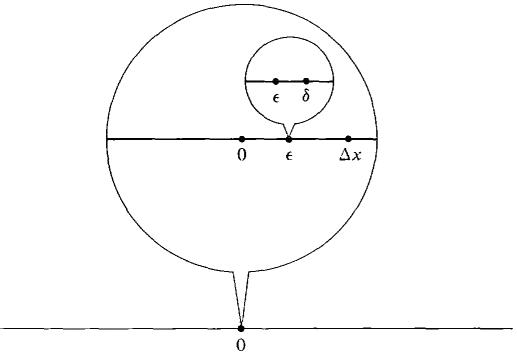| The ebook Elementary Calculus is based on material originally written by H.J. Keisler. For more information please read the copyright pages. |

|

Home  Applications of the Integral Applications of the Integral  Infinite Sum Theorem Infinite Sum Theorem  Infinite Sum Theorem - Definition Infinite Sum Theorem - Definition |
|
| See also: Regions under a Curve | |






|
|
Infinite Sum Theorem - Definition
In Chapter 4 we obtained the formula
for the area of the region bounded by the x-axis, the curve y = f(x), and the lines x = a and x = b. In this chapter we shall obtain integral formulas for several other quantities arising in geometry and physics, such as volumes, curve lengths, and work. We begin with the Infinite Sum Theorem, which will be useful in justifying these formulas. It tells when a given function B(a, b) is equal to the definite integral Any two infinitesimals are infinitely close to each other. The following definition helps us to keep track of how close to each other they are. DEFINITION Let ε, δ be infinitesimals and let Δx be a nonzero infinitesimal. We say that e is infinitely close to d compared to Δx, ε ≈ δ (compared to Δx), if ε/Δx ≈ δ/Δx. In Figure 6.1.1, an infinitesimal microscope within an infinitesimal microscope is used to show ε as δ (compared to Δx).
Figure 6.1.1: ε ≈ δ (compared to Δx)
|
|
Home  Applications of the Integral Applications of the Integral  Infinite Sum Theorem Infinite Sum Theorem  Infinite Sum Theorem - Definition Infinite Sum Theorem - Definition |
|
Last Update: 2010-11-25




